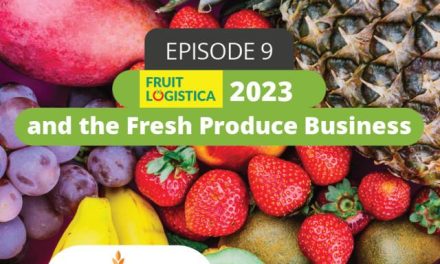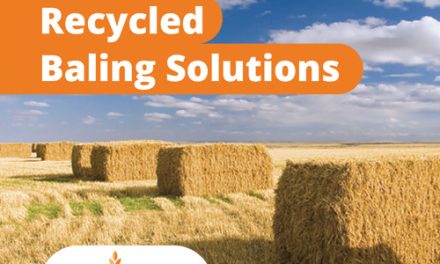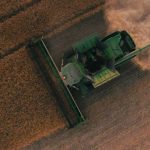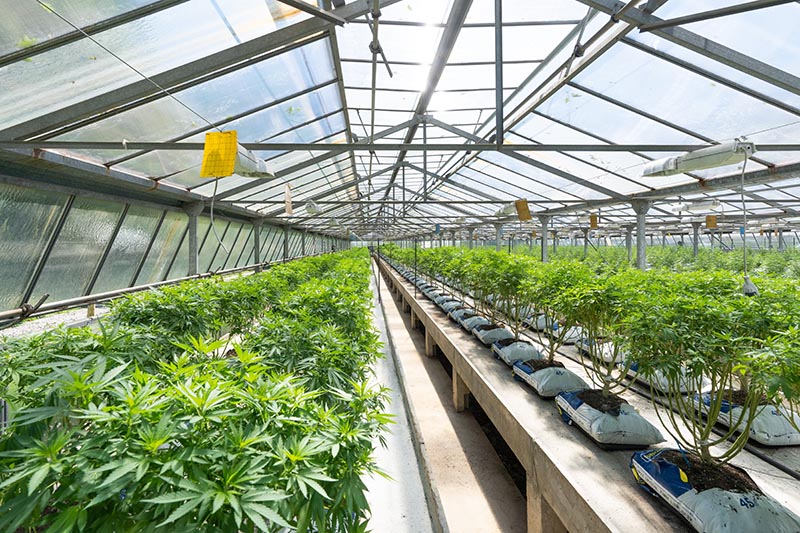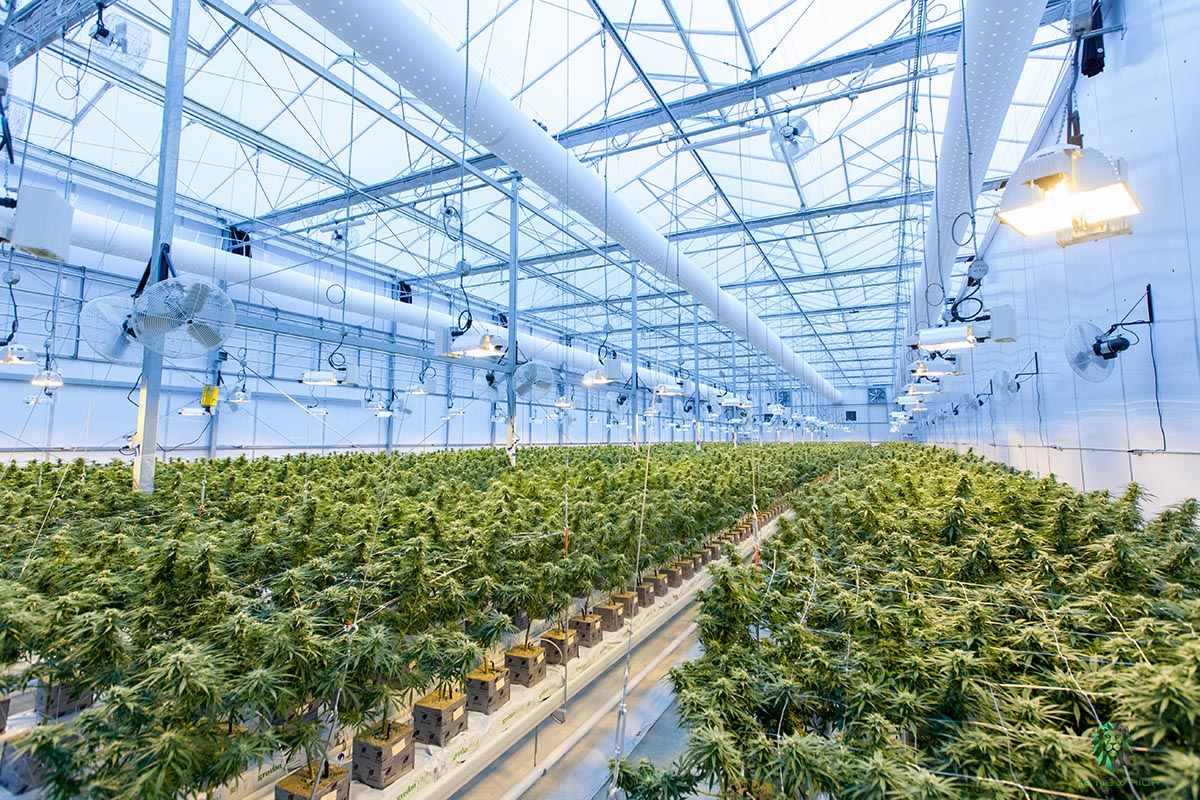
Agricultural plastic covers: evolution, main challenges, and applications

Agricultural plastic covers have been used for decades by farmers around the world to improve the quality of their crops, increase production levels and obtain better results to meet the world’s food demand.
Although agricultural plastics used in structures such as greenhouses or tunnels have achieved important technological innovations, it’s common for doubts to arise even today regarding their specific applications. This is precisely what we’ll deal with in this article.
In this article you’ll find information about:
- The evolution of plastic covers for agriculture
- Current situation and main challenges
- Plastics for berry crops
- Plastics for flower crops
- Plastics for fruit crops
- Plastics for vegetable crops
- Plastics for cannabis crops
- Plastic covers for coffee and cocoa dryers
- Plastic covers for aquaculture
- Plastic covers for agricultural buildings/warehouses
- Frequently asked questions
We will try to answer these and other inquiries in this article. However, if you have any further questions about prices or where to buy agricultural plastic covers or anything related to, please don’t hesitate to contact our experts.
Evolution of plastic covers for agriculture
Before farmers used plastics for their greenhouse crops, glass structures were used, which were expensive, difficult to assemble, and inefficient for crops, as they often caused burns on plant leaves and fruit, as well as quickly losing the temperature inside the greenhouse at night.
According to Juan García, Product Manager of the Greenhouse Cover Division of Armando Álvarez Group, agricultural plastic covers for greenhouses were first used in 1948 because they were cheaper than glass greenhouses and easier to handle. By the 1950s, remarkable improvements in the production and use of new plastics and structures for agricultural crops were developed.
The concept of greenhouse fields was created where superstructures with a simple design were used, built from materials that by 1950 represented a revolutionary concept that changed agriculture in the world.
Initially, the concept didn’t have the expected impact, at least not in the United States, while regions in Europe and Asia quickly adopted it as a technological breakthrough they needed to implement, perhaps because in the United States it was easier to transport fruit and food by truck, thanks to the existing road network between states. While Europe or Asia didn’t have such efficient land transportation and the climate made the situation more complicated in traditional farming areas.
In Spain, the first greenhouses were installed in 1970 to avoid the risk of damage to plants and crops from climatic factors such as wind, rain, frost, and hail.
Agricultural plastic covers for greenhouses allowed to establish crops in seasons and in areas where it was previously unthinkable to cultivate, by achieving microclimates within the structures that enhance the production of fruits, flowers, and vegetables.
The first materials used in greenhouses, for example, in Almeria, were very simple, but effective and profitable. They had the same thickness and color and were used to protect all crops indistinctively.
Later, thermal properties were added to retain a few additional degrees of heat at night, “nobody asked about the optical or mechanical properties as they do today, since it could be produced even in the winter season and it was very profitable to use the same plastic for all or almost all crops,” says García.
Using plastic covers has been an excellent alternative, not only because it’s cheaper and easier to assemble, but also because of its protective quality for crops, plants, and soils, especially from external climatic agents, insects, or pesticides, to name a few factors.
Current situation and main challenges
Intensive and protective horticulture is expected to play a definitive role in the next 30 years due, among other reasons, to the growth of the world population, which continues to increase steadily. According to data from Statista, in just 70 years, since 1950, the world population went from 2.54 trillion to almost 8 trillion people, so it’s estimated that by 2050 there will be almost 10 trillion people on the planet.
This puts the world’s agricultural producers on alert, as they must rethink and restructure planting plans and strategies, to produce up to 50% more to meet the global demand for food that is expected in 2050. Population growth means higher food consumption and greater demand for resources.
Juan García indicates that, although in some regions of the world the food situation has improved, it’s predicted that in other regions the outlook will be somewhat discouraging, where part of the population will go through scenarios where there would be even extreme cases of food shortages with a high risk of starvation, either due to the effects of climate change or misguided socioeconomic measures.
In addition, we are seeing a change in consumption patterns, so there will be an increasing demand for organic foods such as milk, eggs, and meat that are free of pesticides or toxic preservatives and that have been produced in a more environmentally friendly and cost-effective way.
Statista indicates that emerging economies are taking a larger share of global purchasing power and traditionally developed economies are struggling to keep up, so within the list of countries with the largest share of global gross domestic product (GDP) based on purchasing power parity (PPP) in 2019, it’s expected that:
- China maintains its top spot and nearly triples its purchasing power by 2030.
- India could quadruple its purchasing power in the process.
- Developing economies such as Indonesia, Turkey, Brazil, and Egypt are ready to move into ranks four to seven respectively, overthrowing the reign of countries such as Japan and Germany, which are still growing, but at a much slower pace.
- The U.S. may only move down one rank, however, it’s currently dealing with slower growth.
Some of the main challenges and concerns that have surfaced in the agricultural and food sector, as a result of population growth, lack of sustainability options, and uneven income growth, are:
- Increasing total food availability.
- Satisfying the growing diversification of the consumers’ food basket.
- Having the necessary equipment to meet quality standards (safety, environment, welfare, and ethics).
- Keeping food affordable.
Technological transformations are being developed in monitoring systems to increase their efficiency and anticipate the possible risks of climate change (floods, droughts, heavy rains, fires, and high temperatures). The idea is to reduce crop damage and losses.
There is greater consolidation between the agricultural and horticultural sectors, so that on farms in many regions of the world horticultural operations are intensifying and becoming larger, involving the application of modern technologies to increase production levels.
Agricultural plastic cover applications
Thanks to technological innovations, it’s now possible to tailor the properties of films to meet the needs of each agricultural producer.
Currently, there are different types of plastic materials, depending on the type of crop, the structure that supports them, as well as other applications where these plastics can be used outside the agricultural and food area.
Plastics for berry crops
Berry cultivation is one of the most prominent crops in the world, hence the importance of using quality agricultural plastic covers that offer protection and promote a better environment for the crops.
The plastics used for the different berry families are designed to adapt to the most common structures for these crops (macro tunnels or Spanish tunnels), as they are modular and easier to assemble.
Different types of structures include hoop houses which can vary according to the type of arch, size, and choice of pipe/tube specification. The rope/twine used to secure the plastic to the structure also has an influence.
Generally, plastics with excellent light transmission properties are used, which help to balance temperature more efficiently, have outstanding mechanical properties, and are bee-friendly, allowing bees to enter and pollinate the plants. Plastic management and the adjustments made during the crop cycle are fine-tuned by growers to achieve the optimum environment and results.
Some advantages of using plastic covers:
- Improves fruit color and makes it more uniform due to its optical properties.
- Protects against burns.
- It allows obtaining harvests earlier or later than expected, according to the needs.
- There is better control of the microclimate inside the structure.
- The effects of adverse weather events can be controlled.
- It’s a more resistant and durable plastic that’s easy to use.
Plastics for flower crops
Flower cultivation has been one of the sectors most affected by the Covid-19 pandemic, and this is seen around the world with declining export levels. However, global flower production continues to increase each year, which is why the materials used in these crops must have the latest technology.
We invite you to download our eBook on the cut flower industry in the USA and also to read our article on how to grow cut flowers even in reduced spaces.
The plastics used in flower crops optimize the passage of light through the greenhouse, preventing or enhancing the accumulation of anthocyanins and flavonoids, depending on the expected aesthetics of the flower.
Today, specific covering materials are designed for the most commercialized types of flowers, for example, red rose, bicolor rose, carnation, and ornamentals. The key is to know how to choose the color and properties of the plastic so that the crop thrives as expected.
Read here more about the color of plastic greenhouse covers and their importance.
If you grow flowers and need advice on the best plastic cover for your field depending on your geographical location and climatic factors, don’t hesitate to contact us.
Some advantages of using these films:
- It favors an intense and homogeneous coloration of the bud.
- It blocks UV rays, which at 380 nm reduces the presence of pests such as whiteflies and thrips.
- It helps to maintain a higher temperature at night, which is necessary to achieve the optimum environment for the development of the red rose crop.
- There is greater resistance to the application of chemical products, commonly present due to the prevalence of fungal diseases in this crop.
Plastics for fruit crops
In many countries, most of these protected crops are covered by netting and their main function is to protect the fruit from wind or hail. However, there are many crops where the investment in structures with plastic covers is increasingly justified and necessary, since using them increases the possibilities to improve the quality of the product obtained in terms of its size, color, flavor, etc.
Agricultural plastic covers for fruits are special for their optical and mechanical properties, so it all depends on the type of fruit. Some plastics work better for bananas or cherry production, while others work better for grapes, mangoes, papayas, etc., but generally, they enhance all fruit crops.
Some differentiating elements:
- Based on the plant or tree, characteristics such as the size and management of each crop will determine the design of the structure.
- The design of the cover structure influences the type of film used. Crop management, the distance between arches and the film.
- Usually, the structures are more rudimentary (although there are exceptions).
- Depending on the type of fruit and its varieties, the appropriate covering material should be adapted to the specific needs of each one.
Plastics for vegetable crops
Around the world, most plastic covers are used for vegetable crops, especially tomato and cucumber crops, but also many other vegetables consumed in every region of the world.
The plastics used will depend on the type of crop, geographical area, target harvest date, cultural practices (pesticides), and technology used (type of structure).
The optical properties of a film will be different, even in the same geographical area, if we have a long cycle crop (9, 10, 11 months) than in the same location for a short spring cycle. Many of these crops require very robust and more complex structures that must support a lot of crop weight, and this also influences the mechanical properties of the materials and their durability.
In recent years, several new additives have been developed to help increase the performance of plastics on crops, e.g., extra-thermal, anti-thermal, anti-condensation, anti-hail, extra-pesticide resistance, etc. Some companies have developed 5 to 7-layer plastics that allow optimizing the use of all these additives, making them more viable for commercialization.
Some differentiating elements:
- The choice of material is especially important in high, medium, or low-tech greenhouses since each category has its own specifications that will allow obtaining the desired values of light and temperature.
- The thickness of plastics has decreased, and today it’s possible to find films from 180 to 150 microns, which in turn have greater durability.
Plastics for cannabis crops
According to data from Grand View Research, the global cannabis market is worth approximately US$11 trillion and is estimated to reach almost US$54 trillion by 2025. Its growth is because the plant is mainly used in the pharmaceutical, cosmetic, food, and textile industries. Today, varieties such as Sativa, Indica, Ruderalis, and other hybrids are cultivated.
What to expect from plastics covers used in cannabis cultivation:
- Continue discovering the most suitable materials for each region and plant variety.
- Improve trichome production and obtain the highest amount of thc and cbd, by using materials with the open ultraviolet light spectrum, from 380 to 320 nanometers, so the more UV radiation the plant receives, the more resin it will produce.
- Continue testing the use of opaque materials (black and white or green and white), with the appropriate angle, which allows reducing the hours of light when necessary or for sections where the crop dries in the absence of external light.
- Develop materials that are more resistant to friction.
If you would like to see options of plastic covers for berries, flower, vegetables, fruits or cannabis we recommend this manufacture that sales its products worldwide.
Other agricultural and non-agricultural applications
Plastic covers for coffee and cocoa dryers
Solar dryers are small tunnel-type greenhouses with plastic greenhouse covers and laminated raffia, used for drying coffee or cocoa. This isn’t a new technique, and it’s a good way to save energy, reduce gas emissions, reduce drying time (between 7 and 10 days), and obtain a coffee or cocoa of high physical and sensory quality.
Plastic covers for aquaculture
It’s a common practice in South America, where many river-stream producers are using fish farms as part of their overall production strategy, which is rapidly expanding and gaining popularity. Greenhouse plastics are generally used to establish farms to grow, for example, shrimp, tilapia, and seaweed.
An important benefit is that there is greater operability, control, and biosafety, by reducing the area and volume of culture in a series of intensively managed high-density tanks, so there is better control over water quality, temperature, and climatic conditions, which directly affects the quality and production of the shrimp or fish. This is called super-intensive culture.
Plastic covers for agricultural buildings/warehouses
These are structures built from flexible plastic covers that are easy to handle, have high durability, and are more economical than a permanent structure. These films have a high technological development where mechanical properties are very important. They are very resistant and have an adequate coefficient of linear expansion.
Generally, these structures don’t require licenses, so they can be used for multiple purposes such as agricultural buildings/warehouses, storage (agricultural and industrial), operations buildings, equestrian, environmental, etc. For more information, we invite you to watch our webinar.
Product we recommend for buildings/ warehouses:
Frequently asked questions about agricultural plastic covers
How often should plastics be changed in greenhouses?
According to Juan Garcia, everything will depend on the geographical area, the crop, and the structure. Many factors affect the life expectancy of plastic greenhouse covers, but perhaps two, three, or four years would be the average time a greenhouse cover lasts in good condition. It also depends if the importance of light transmission is more/less critical to the specific crop.
What is the benefit of using more pesticide-resistant plastic?
In certain crops, for specific geographical areas or times of the year, the use of pesticides is a requisite for crop management. Many of these pesticides contain sulfur, which is a natural enemy of polyethylene, so it’s essential to install a plastic cover with adequate resistance to the accumulation of sulfur that will take place during the crop cycle. The same can be said about chlorine that is present in many chemicals used on crops.
What is the percentage of light diffusion rate in flower and berry fields? How does it change based on climatic conditions?
Normally when solar radiation is higher, the diffusion should also be higher. It will depend on the crop, seasonal use, period or time of year, and crop requirements. The key is to analyze each specific situation and remember that the plastic cover will be present during all seasons of the year, decisively influencing the crop, so it will be necessary to determine the most favorable average diffusion. In winter it will be one and in summer another, so it’s necessary to look for the diffusion that’s valid for all the seasons in which the crop is developing.
Can better crop color be promoted by using colored plastics?
Despite not being fully demonstrated yet, it is believed that this is the case. Tests have been done for many years with different colors, which will certainly affect the crop. Perhaps the effect is greater in very small tunnels of less than one meter in height, where there’s less distance from the crop to the roof, but possibly a better color can be promoted in the crop.
For more information, we recommend reading our article on frequently asked questions about fruit tree covers.
We also invite you to contact our team specialized in plastic covers for greenhouses, who will be glad to give you advice on the best choice of plastic material based on the specific conditions of your crop.



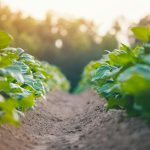
![[eBook] Sustainability and water management](https://agriplasticscommunity.com/wp-content/uploads/8_550x310_ENG-150x150.png)
![[eBook] Sustainability and water management](https://agriplasticscommunity.com/wp-content/uploads/8_550x310_ENG-440x264.png)
![[eBook Trends in Agriculture Plastics] Increasing use of biodegradable mulch](https://agriplasticscommunity.com/wp-content/uploads/550 × 310_2_ENG-440x264.png)
![[eBook Trends in Agriculture Plastics] Reducing the plastic used in the manufacture of agricultural films](https://agriplasticscommunity.com/wp-content/uploads/550 × 310_1_ENG-150x150.png)





